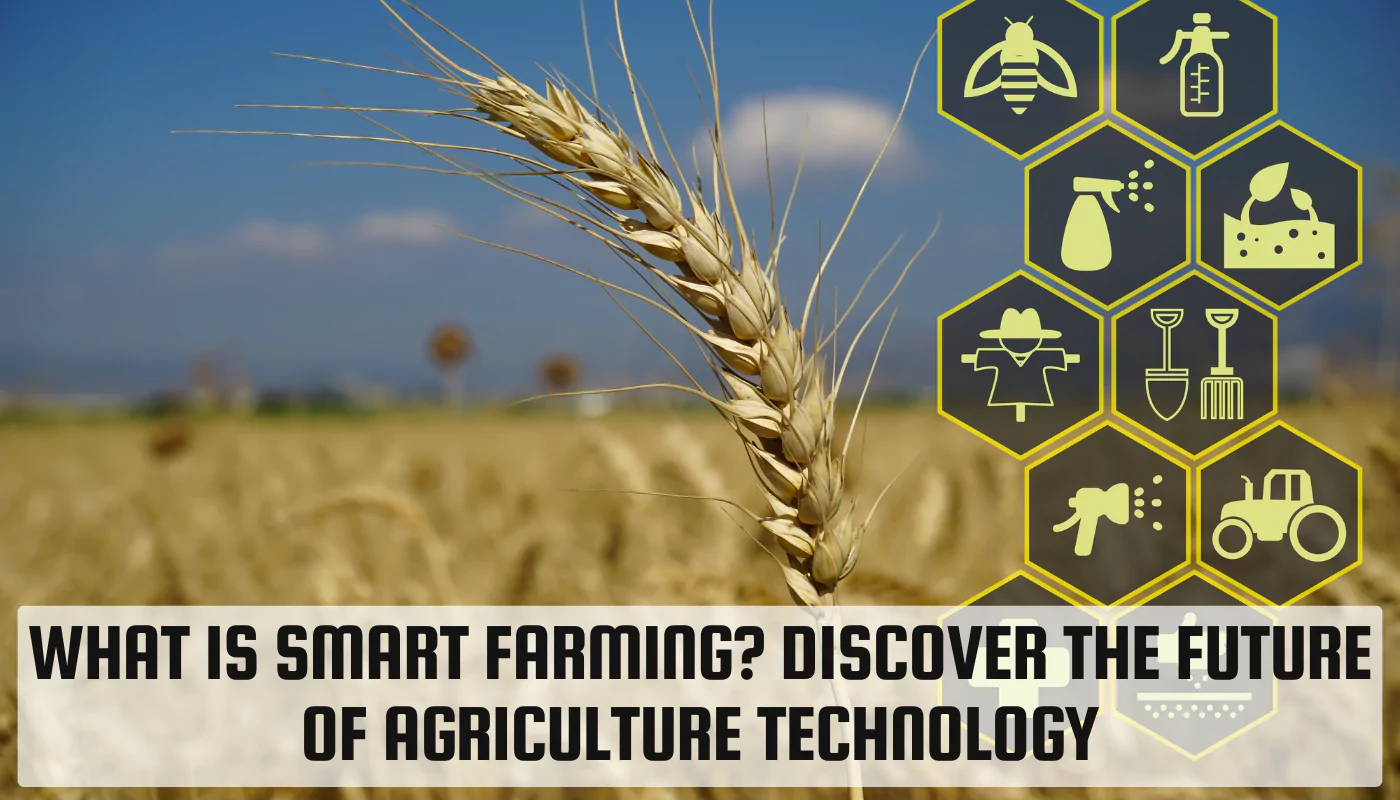What is Smart Farming? Discover the Future of Agriculture Technology

Smart farming uses technology to improve agricultural practices. It involves using sensors, drones, and data analytics to make farming more efficient and productive. Smart farming is important because it helps farmers grow more food with fewer resources.
Key Components of Smart Farming
Internet of Things (IoT) in Agriculture
IoT in agriculture involves using sensors and devices to collect data from the field. These sensors can monitor soil moisture, temperature, and crop health. This data helps farmers make better decisions about watering, fertilizing, and harvesting.
Precision Farming Techniques
Precision farming uses technology to apply water, fertilizers, and pesticides only where they are needed. This reduces waste and increases crop yields. GPS technology helps farmers map their fields and apply inputs precisely.
Use of Drones and Robotics
Drones and robots are used in smart farming to monitor crops and perform tasks like planting and harvesting. Drones can take aerial images of fields to identify problems like pest infestations or nutrient deficiencies. Robots can work in the fields, reducing the need for manual labor.
Artificial Intelligence and Machine Learning Applications
AI and machine learning help analyze data collected from the farm. These technologies can predict weather patterns, pest outbreaks, and crop yields. This information helps farmers plan their activities and make informed decisions.
Benefits of Smart Farming
Increased Crop Yields
Smart farming techniques help increase crop yields by optimizing the use of resources. Precision farming ensures that crops get the right amount of water and nutrients, leading to healthier plants and higher yields.
Efficient Resource Management
Smart farming helps manage resources like water, fertilizers, and pesticides more efficiently. Sensors and data analytics provide real-time information, allowing farmers to use resources only when and where they are needed.
Reduced Environmental Impact
By using resources more efficiently, smart farming reduces the environmental impact of agriculture. Precision farming techniques minimize the use of chemicals, reducing pollution and conserving water.
Enhanced Decision-Making Processes
Smart farming provides farmers with accurate and timely information. This helps them make better decisions about planting, watering, and harvesting. Data-driven decisions lead to better outcomes and higher productivity.
Technologies Driving Smart Farming
Sensors and IoT Devices
Sensors and IoT devices collect data from the field. They monitor soil conditions, weather, and crop health. This data is used to make informed decisions about farming practices.
GPS and Geospatial Technologies
GPS technology helps farmers map their fields and apply inputs precisely. Geospatial technologies provide detailed information about soil types, crop conditions, and field variability.
Big Data Analytics
Big data analytics involves analyzing large amounts of data to identify patterns and trends. In smart farming, this data comes from sensors, drones, and other sources. Analyzing this data helps farmers make better decisions.
Blockchain for Supply Chain Transparency
Blockchain technology provides transparency in the supply chain. It allows farmers to track the journey of their products from the field to the consumer. This ensures food safety and builds trust with consumers.
Case Studies and Real-World Applications
Examples of Successful Smart Farming Implementations
Many farms around the world have successfully implemented smart farming techniques. For example, a farm in the Netherlands uses sensors and data analytics to optimize greenhouse conditions. This has led to higher yields and reduced resource use.
Impact on Small and Large-Scale Farms
Smart farming benefits both small and large-scale farms. Small farms can use affordable sensors and data analytics to improve their practices. Large farms can invest in advanced technologies like drones and robotics to increase efficiency.
Challenges and Limitations
High Initial Costs
The initial cost of implementing smart farming technologies can be high. Farmers need to invest in sensors, drones, and data analytics tools. However, these costs can be offset by the long-term benefits of increased productivity and resource efficiency.
Data Privacy and Security Concerns
Collecting and storing data from the farm raises privacy and security concerns. Farmers need to ensure that their data is protected from unauthorized access and breaches.
Technical Expertise and Training Requirements
Smart farming requires technical expertise and training. Farmers need to learn how to use new technologies and interpret data. This can be a barrier for some farmers, especially those in developing regions.
Future Trends in Smart Farming
Integration of 5G Technology
The integration of 5G technology will enhance smart farming by providing faster and more reliable connectivity. This will enable real-time data collection and analysis, improving decision-making processes.
Advances in Autonomous Farming Equipment
Advances in autonomous farming equipment, such as self-driving tractors and robotic harvesters, will further increase efficiency. These machines can work around the clock, reducing the need for manual labor.
Sustainable and Climate-Resilient Farming Practices
Smart farming will continue to focus on sustainability and climate resilience. Technologies that reduce resource use and minimize environmental impact will be prioritized. This will help farmers adapt to changing climate conditions and ensure food security.
Conclusion
Smart farming is transforming agriculture by using technology to improve efficiency and productivity. It involves the use of sensors, drones, data analytics, and AI to make informed decisions. Smart farming benefits both small and large-scale farms by increasing crop yields, managing resources efficiently, and reducing environmental impact. Despite challenges like high initial costs and data privacy concerns, the future of smart farming looks promising with advancements in 5G technology, autonomous equipment, and sustainable practices.
FAQs
Q: What is smart farming?
A: Smart farming uses technology to improve agricultural practices, making farming more efficient and productive.
Q: How does IoT help in agriculture?
A: IoT involves using sensors to collect data from the field, helping farmers make better decisions about watering, fertilizing, and harvesting.
Q: What are the benefits of smart farming?
A: Benefits include increased crop yields, efficient resource management, reduced environmental impact, and enhanced decision-making processes.
Q: What are the challenges of smart farming?
A: Challenges include high initial costs, data privacy and security concerns, and the need for technical expertise and training.
Q: What are the future trends in smart farming?
A: Future trends include the integration of 5G technology, advances in autonomous farming equipment, and sustainable farming practices.









